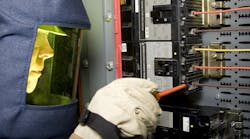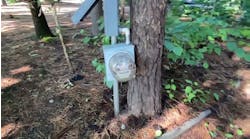The IEEE Standards Association, Piscataway, N.J., has published a new guide for understanding and calculating arc-flash hazards in electrical equipment. The new IEEE 1584-2018—IEEE Guide for Performing Arc-Flash Hazard Calculations was produced in collaboration with the National Fire Protection Association (NFPA) as part of an effort to provide the industry with improved models and an analytical process to enable calculation of predicted incident thermal energy and the arc-flash boundary, IEEE said in a release announcing the guide’s publication.
Sponsored by the IEEE Industry Applications Society, Petroleum & Chemical Industry (IAS/PCIC), this new technical standard is the result of extensive research and laboratory testing conducted by the Arc Flash Research Project.
“Our extensive, collaborative work with the NFPA has resulted in an IEEE standard that dramatically improves the prediction of hazards associated with arcing faults and accompanying arc blasts,” said Konstantinos Karachalios, managing director of the IEEE Standards Association. “Contractors and facility owners will benefit from IEEE 1584 by being able to more thoroughly analyze power systems to calculate the incident energy to which employees could be exposed during operations and maintenance work, allowing them to provide appropriate protection for employees in accordance with the requirements of applicable electrical workplace safety standards.”
IEEE 1584-2018 includes processes that cover the collection of field data, consideration of power system operating scenarios, and calculation parameters. Applications include electrical equipment and conductors for three-phase alternating current voltages from 208 V to 15 kV.
“The update to IEEE 1584 has empowered thousands of engineers conducting Arc-Flash Hazard Calculations,” said Daleep Mohla, chair, IEEE 1584 Arc-Flash Hazard Calculations Working Group. “These efforts, conducted in partnership with the NFPA, have armed all stakeholders involved in Arc-Flash hazards to better protect employees and contractors in the working environment.”
More information on IEEE 1584-2018 is available here.



